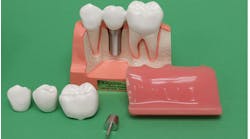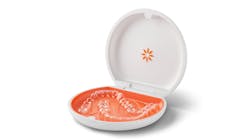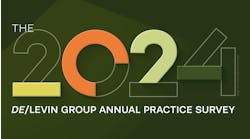In "Why financial statements are the key to growing your practice and your wealth," we discussed the financial statement. Now we’ll look at its less popular counterpart, the balance sheet. Most business owners are familiar with the balance sheet, but few look forward to reviewing it. Most people don’t fully understand it and as a result, they avoid it.
There are two useful definitions of the balance sheet. The first, by Oxford Languages, clearly specifies what it is: a statement of the assets, liabilities, and capital of a business or other organization at a particular point in time, detailing the balance of income and expenditure over the preceding period.1
The second definition gives a thoughtful insight into the dynamics of the balance sheet: A balance sheet summarizes a company's assets, liabilities, and shareholders' equity at a specific point in time. It is one of the fundamental documents that make up a company's financial statements.2
What connects these definitions? The emphasis is on the specific point in time. This is very important—the balance sheet gives the user a time-specific perspective on business performance and allows them to take an inventory of the business’s assets, liabilities, and owner’s equity. In short, the balance sheet provides a snapshot of what a business owns and owes. Additionally, it shows the amount invested by shareholders into the business.
You might also be interested in: Metrics that make you attractive to lenders
Why is it called a balance sheet?
The balance of total assets should equal the balance of total liabilities and shareholders' equity. The balance between assets, liabilities, and equity makes sense when it is applied to the financial elements of the practice.3
Here’s an example: you buy a practice for $400,000 (the assets). You bring to the table $100,000 in cash (which is your equity) and finance the rest with a $300,000 bank loan (which is your debt or liability). The total value of the practice ($400,000 minus the assets) equals the sum of the liability ($300,000) and the equity ($100,000).
This simple explanation clarifies the concept of the balance sheet and its accounting equation when assets on one side equate to business liabilities and shareholder equity on the other: assets equals liabilities plus shareholder equity.
The balance sheet adheres to the intuitive concept reflecting the principle that the business must pay for all the things it owns (the assets) with either contributed capital (shareholder equity) or borrowed money (liabilities) or a combination of both. This financial formula represents the most important basis of financial accounting.4
Balance sheets are complicated because they connect many important pieces and establish relationships between those pieces with one formula, which is the one we discussed in our last article. The complexity of the balance sheet is sometimes difficult to comprehend. However, it shouldn’t be this way. While the balance sheet is a critical piece of the financial statement puzzle, it gives information you need in an efficient and easily identifiable format.
The balance sheet is essential, first and foremost, because it has all the information you need immediately right in front of your eyes, and it is accurate. It's essential because other parties that you depend on, such as banks or your potential practice buyers, are likely to scrutinize it. You can’t afford to ignore it.
How to read your balance sheet
The balance sheet is a short statement but can seem quite cryptic. But once you understand it, it makes future reviews and analysis fast and easy. The statement (yes, it’s a financial statement) is separated into three parts: assets, liabilities, and owner’s equity.
Assets: The first section of the assets lists what your business owns that can be converted into cash. For your dental practice, assets range from financial (money in the bank, investments, or accounts receivable) to physical (equipment, supplies, or real estate). Since the category is broad, the balance sheet breaks down the assets into two categories.
The first category is current assets, which are those expected to be converted into cash within one year. These are usually bank accounts, investments, accounts receivable, and supplies/inventory. The second category is long-term assets, those that are not expected to be converted to cash within one year. That will usually be your equipment, such as x-ray machines, dental chairs, computers, and more. If your practice owns your office building, a car, or any patents, those line items also appear here.4
Liabilities: The second section lists everything your business owes to others. Items you will frequently see here are accounts payable, credit card balances, payroll and payroll taxes, or other taxes owed. Like the assets, these will then be broken down further.
First, current liabilities include items due within one year, such as payroll, accounts payable, and credit cards. Anything that has a longer life goes into long-term liabilities. These include longer term loans or a mortgage on a property.
Owner’s equity: The last section includes the net equity of the practice owner. For a partnership or LLC, this may appear as member's equity. This is a simple calculation—total assets minus total liabilities.5
Checks and balances
They don’t call it a balance sheet for nothing—it’s a natural check mechanism. The brilliance of the formula is in its simplicity: liabilities plus owner's equity should equal assets. If it works, you know your balance sheet is in balance.6 But what exactly does all this tell you? Like all your financial statements, it helps you understand the health of your business. Understanding the financial state of your business is crucial, and it’s not just for you.
Critical details for lenders: The balance sheet gives potential lenders (and you, of course) a quick snapshot of your ability to cover payments or withstand a slowdown in revenue. This statement shows how able you are to meet financial obligations. The balance sheet is critical if you ever seek financing to grow your practice. This shows lenders you can cover the payments.
Shows areas for improvement: The balance sheet can also be helpful for you, the practice owner. Think of it like an x-ray or other diagnostic test. It shows clinical findings that are normal and not normal. A healthy balance sheet shows many financial aspects of the business that are in good shape. It can also help you highlight and diagnose problems. For example, if you have high current liabilities but low current assets, you may soon face a cash crunch. On the other hand, high current and long-term assets can mean you're well positioned for growth.
Vital information for potential buyers: Sophisticated practice buyers look to your balance sheet to see how well you run your practice. While it can’t provide all the answers, “dirty” balance sheets, meaning the owners have probably not paid much attention to them, can provide valuable clues about underlying business issues. For example, high receivables may indicate a lack of collection efforts, or a much worse problem with customer satisfaction and outcomes.
Don’t ignore the balance sheet
Not all balance sheets are equal. Many businesses have dirty balance sheets. These might be unclear, outdated, or contain messy information. It’s also very important to compare balance sheets from one year to another to understand the dynamics of the practice. Dramatic changes in the assets or liabilities may indicate alarming changes for a buyer, especially if the practice is being sold and the seller wants to depart immediately after the acquisition.
If you plan on selling your business down the road, most buyers will look closely at your balance sheets. The same goes if you buy a practice and want financing or a loan. Creditors and banks prioritize the balance sheet because it allows them to understand the risk they’re willing to accept by financing your practice acquisition. You'll want a clean balance sheet for all these reasons. That means one that is organized, with all entries reviewed and verified.
Editor's note: This article appeared in the May 2023 print edition of Dental Economics magazine. Dentists in North America are eligible for a complimentary print subscription. Sign up here.
References
- Oxford Languages. Balance sheet definition. 2002. https://languages.oup.com/
- Cornett M, Adair T, Nofsinger J. Finance: Applications and Theory 6th ed. McGraw Hill Education; 2022.
- Basic understanding of a company’s financial statements. PWC. September 2020. https://www.pwc.com/jm/en/research-publications/pdf/basic-understanding-of-a-companys-financials.pdf
- Balance sheet. Business Development Bank of Canada. 2002. https://www.bdc.ca/en/articles-tools/entrepreneur-toolkit/templates-business-guides/glossary/balance-sheet
- Stobierski T. The beginner’s guide to reading and understanding financial statements. Harvard Business School Online. June 10, 2020. https://online.hbs.edu/blog/post/how-to-read-financial-statements
- Wild J. Fundamental Accounting Principles 18th ed. 2006. McGraw-Hill Companies; 2006:630-633.






